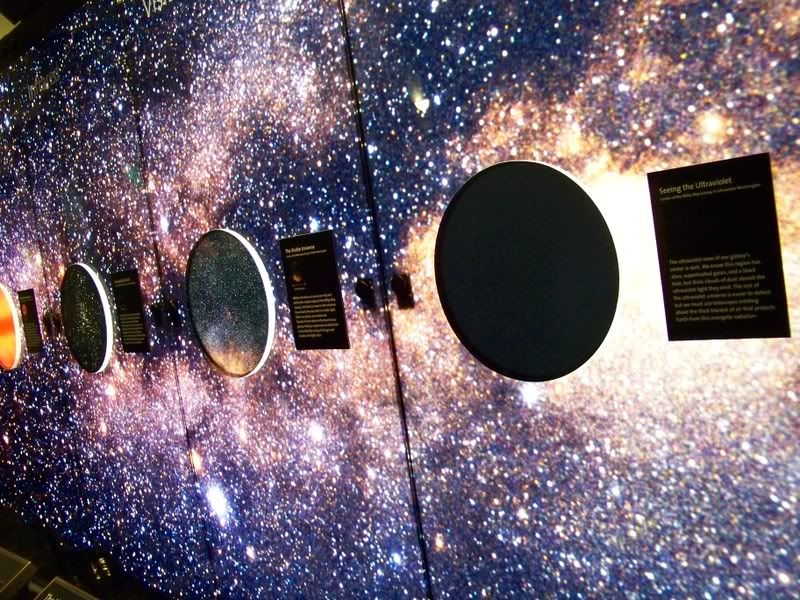It goes without saying that the Griffith Observatory was inspired by the stars. It's purveyors believed that a close look at the world around us was enlightening and profoundly affected the viewer. The Observatory grounds were envisioned to be a place where the public could access the engimatic mysteries of the universe in a relaxed, fine atmosphere. When Griffith J. Griffith came along, it was an endeavor not yet achieved in Los Angeles.
In the Spring of 1930, planning began for L.A.'s first 'Great Park'. Costs were low due to the present Depression. For the same reason, talented architects were available, the finest stones and resources were prevalent. Earthquakes, Focult's Pendulum, a planetarium and the observatory's telescope tower were considered in preparation of this 'Great Park'. Today, the observatory is a newly renovated mansion, closed in 2002 and reopened in 2008 at the cost of $93 million dollars. There are no parking or entrance fees and you no longer have to make a reservation to visit. In fact, the only fee is a ticket to see a half-hour show at the Planetarium, at a cost of seven dollars. The grounds are grandiose and pristine, the views wide and dramatic.
The Observatory is, as its shape suggests, toured as follows: an entrance, a left, then right, a downstairs and a roof - accessible by winding staircases along the side of the building. A telescope is brought out on the outside lawn daily for a closer look at Venus, the most visible planet in the L.A. firmament. Exhibitions cover the high points of astoronomy's most notable celebrities and inventions, featuring the theories and beliefs that first brought our eyes skyward. Planetarium shows run every 45 minutes. Using digital laser technology, a Zeiss Universarium Mark IX star projector (latest in it's field), live narration, and seamless dome construction to create an immersive program for viewers, the Planetarium is all about modern design. The narrator warns that you may get nauseous, to close your eyes if this happens, it's only a visual affect. Follow signs to the lower level to view information about our planets, meteorites and the moon. Weigh yourself on Mars and Neptune, read about Saturn's icy rings, and locate the stars in our sky. The upper level is about the past, the lower about our future. The whole is about our location in the galaxy.
Viewing our galaxy is profound and humbling, and the Griffith Observatory is all it was meant to be. A place for relaxation and education, a 'Great Park' as Griffith J. Griffith envisioned. The observatory makes the city remarkable, draws foreigners to its gates, and provides a heaven's view of the dusty L.A. landscape. An alluring view from above.













In the Spring of 1930, planning began for L.A.'s first 'Great Park'. Costs were low due to the present Depression. For the same reason, talented architects were available, the finest stones and resources were prevalent. Earthquakes, Focult's Pendulum, a planetarium and the observatory's telescope tower were considered in preparation of this 'Great Park'. Today, the observatory is a newly renovated mansion, closed in 2002 and reopened in 2008 at the cost of $93 million dollars. There are no parking or entrance fees and you no longer have to make a reservation to visit. In fact, the only fee is a ticket to see a half-hour show at the Planetarium, at a cost of seven dollars. The grounds are grandiose and pristine, the views wide and dramatic.
The Observatory is, as its shape suggests, toured as follows: an entrance, a left, then right, a downstairs and a roof - accessible by winding staircases along the side of the building. A telescope is brought out on the outside lawn daily for a closer look at Venus, the most visible planet in the L.A. firmament. Exhibitions cover the high points of astoronomy's most notable celebrities and inventions, featuring the theories and beliefs that first brought our eyes skyward. Planetarium shows run every 45 minutes. Using digital laser technology, a Zeiss Universarium Mark IX star projector (latest in it's field), live narration, and seamless dome construction to create an immersive program for viewers, the Planetarium is all about modern design. The narrator warns that you may get nauseous, to close your eyes if this happens, it's only a visual affect. Follow signs to the lower level to view information about our planets, meteorites and the moon. Weigh yourself on Mars and Neptune, read about Saturn's icy rings, and locate the stars in our sky. The upper level is about the past, the lower about our future. The whole is about our location in the galaxy.
Viewing our galaxy is profound and humbling, and the Griffith Observatory is all it was meant to be. A place for relaxation and education, a 'Great Park' as Griffith J. Griffith envisioned. The observatory makes the city remarkable, draws foreigners to its gates, and provides a heaven's view of the dusty L.A. landscape. An alluring view from above.



















No comments:
Post a Comment